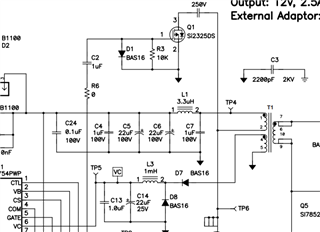Other Parts Discussed in Thread: PMP9563, TPS23754, TPS23734
Hi,
The TPS23754EVM-383 appears to be shipped with the Pulse PA2649NL transformer. From the schematic and from what I can see on the PCB, it looks as though the winding polarity for the bias rail is such that pin 4 connects to the bias rail and pin 5 to return as below:

However, looking at the pulse transformer datasheet, it looks like the dot of the bias coil is actually pin 5.
https://productfinder.pulseeng.com/products/datasheets/P675.pdf
Unless I'm missing something, I think this means the bias rail is connected in reverse polarity as intended by the schematic. However, for the other alternate parts listed, the polarity of the bias winding is different - e.g. for the BOM option of Wurth 750311320, the bias polarity is such that pin 4 has the dot:
https://www.we-online.com/catalog/datasheet/750311320.pdf
Can you let me know which is correct? From what I can tell online, it suggests that the schematic is correct and the error is in the pin mapping on the Pulse transformer? Or perhaps an incorrect part number on the BOM?
What are the implications of the incorrect winding polarity on the Pulse transformer (it's presumably a tried and tested design) and seems to be working in the testing I have done here.
Many thanks

